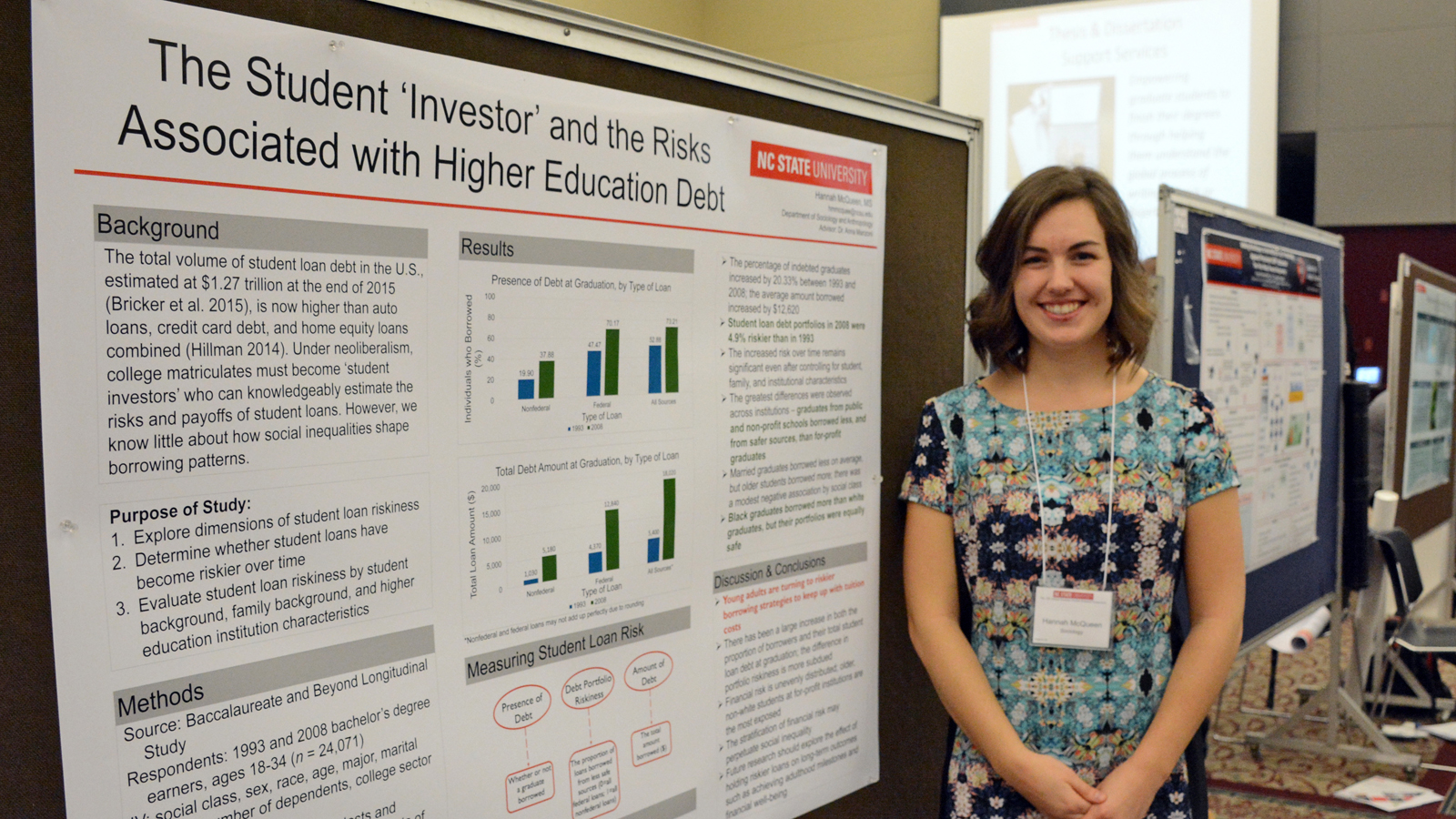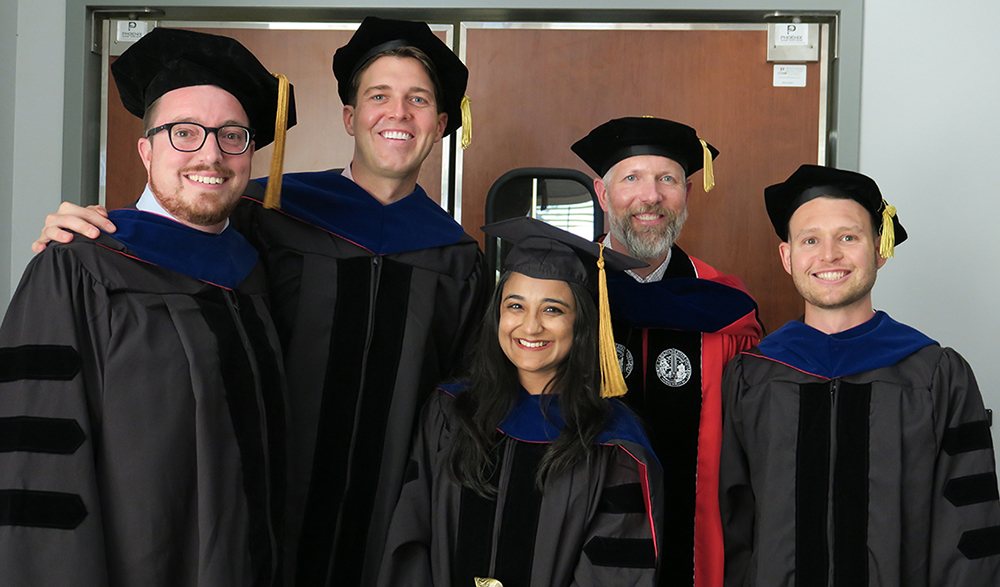How Risky Are Today’s Student Loans?

When it comes to paying for college, students only have a few options. One is to borrow.
And with many students taking out multiple loans to finance their college debt, private borrowing is becoming a popular choice. NC State graduate student Hannah McQueen says that trend could accompany a higher level of risk, as private loans typically offer less favorable terms than the more traditional borrowing programs backed by the federal government.

Curious about just how risky today’s loans are — and who is most likely to use them — McQueen created her own measure to study a nationally-representative sample of student loan records. We caught up with McQueen, a doctoral candidate in sociology, about her research and findings.
Q: What did you study?
McQueen: My master’s thesis research was motivated by the rapid proliferation of student loans in the United States. We know that more people nowadays are borrowing for college than just 10 or 20 years ago. We also know that debt amounts are increasing — the average debt at graduation recently broke the $30,000 threshold!
My concern is that these data gloss over another social problem — the rise of the private student loan industry. Private loans generally have less favorable terms than federal loans. So, I created a new measure: the riskiness of student loan debt portfolios. This is the proportion of an individual’s total debt portfolio that comes from nonfederal sources. The higher the proportion, the greater amount of financial risk that individual holds. For example, an individual with $10,000 in subsidized federal Stafford student loans is in a better financial position, on average, than someone with $10,000 from a private bank. This difference is masked if you only consider the total debt amount.
My first research question was, “Are student loans getting riskier over time?” My second was, “Who in society is more likely to have risky student loans?”
Q: How did you compare debt and loan risk over time and between different groups of students?
McQueen: In order to compare debt over time, I used data from a nationally representative survey (The Baccalaureate and Beyond Longitudinal Study) of 24,000 college graduates. In addition to detailed student loan records, I also looked at many characteristics of the student borrowers: individual characteristics like race, class and gender; their family background; and the type of college or university from which they graduated.
Q: What did you find?
McQueen: I compared 1993 graduates to 2008 graduates and found that those in 2008 were indeed more likely to borrow, borrowed greater amounts and possessed riskier debt portfolios. However, not every borrower was at equal risk. Students from lower classes were more likely to have taken on risky loans. Black graduates had to borrow more to complete college, but their loans came from safer sources than their white peers. Graduates from public universities like NC State had less risky loans than graduates from private nonprofit colleges; however, students at for-profit institutions had the riskiest student loans.
We need to think about risk in multiple dimensions, but we also need to concern ourselves with the structural features of the student loan market.”
— Hannah McQueen
Q: What do your findings say about the borrowing patterns of college students? Why is it important for scholars to continue researching this issue?
McQueen: Overall, my research shows that as the student loan market evolves, some students bear the burden of increased financial risk more than others. Unfortunately, these students are at a relative financial disadvantage when they leave school, find a job, decide to buy a house, etc. I think this topic is important and timely. We need to think about risk in multiple dimensions, but we also need to concern ourselves with the structural features of the student loan market. Higher interest rates and fewer protections for borrowers can burden those who have student loans and diminish their financial health.


